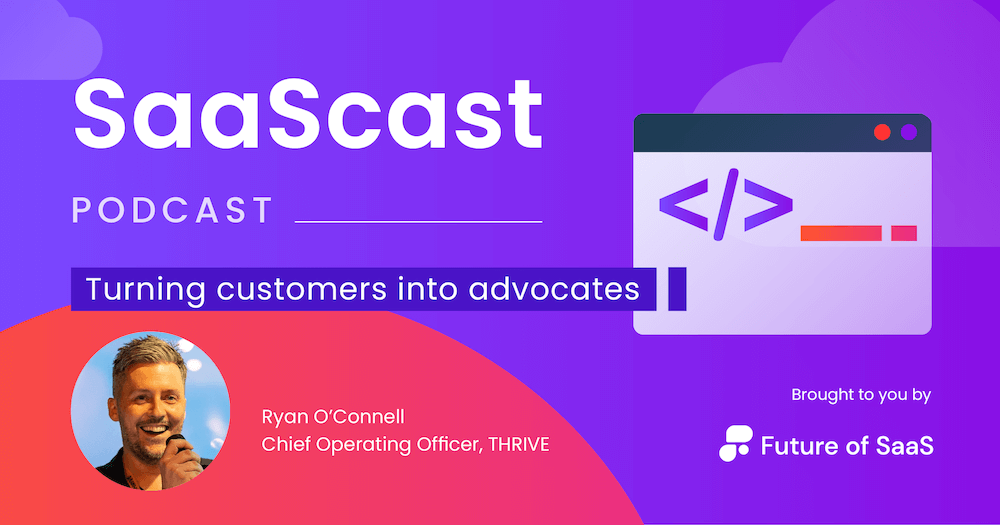Paid advertisements are getting more expensive. The cost of customer acquisition via paid ads is spiraling high. Yet people are willing to throw their SaaS marketing budgets into buying ad placements. Why blow away your digital marketing budget when you can attract and retain paying clients for free?
With a solid SaaS content marketing strategy, you can use your website, social media platforms, and email marketing to attract high-quality leads, get free trials of your SaaS product, and retain customers for free.
Research from demand metric shows that SaaS content marketing cost 62% less than running paid ads, but is still 3x effective for acquiring leads and demo trials. So content marketing isn't just cheaper. It is 3x more effective than paid ads.
Another report from Copygoals shows that SaaS companies doing content marketing see a 30% higher growth rate and 5-10% higher retention rates than SaaS companies who ignore it.
So if you haven't considered content marketing as a valid strategy for promoting your SaaS product, now is the best time to make that decision. If yes, then this post is for you.
Disclaimer!
The common mistake most people make is to assume content marketing is easy. But it's not. Content marketing is a long-term compounding strategy that will exponentially reward you if you stay consistent and commit to sharing high-valuable content for free.

Note the keywords here—long-term, consistent, and high-valuable content. So if you’re going into SaaS content marketing, then play the long-term game. Go all in.
In this article, we'll discuss all the steps — including the ones most marketers skip — you need to help you promote your SaaS product and attract and retain users with content marketing.
Get your notes and pen ready because we're about to dive in.
What is SaaS content marketing?
Edan-Ben Atar says:
“SaaS content marketing means using educational and informative content, such as blog posts, videos, ebooks, webinars, and podcasts, to effectively communicate a SaaS product’s benefits and unique value proposition to a targeted audience.”
Edan Ben-Atar, founder of one-page website builder, Limey.
Edan's term highlights the core message content marketing communicates to your customers:
- The SaaS product
- Features & Benefits
- Unique value proposition
Another disclaimer!
No marketing campaign can save a bad product. Above your marketing effort, you need a product that delivers real-time value and a responsive customer support team to attract and retain users.
How does content marketing attract and retain more leads to Your SaaS business?
47% of buyers still view 3 to 5 pieces of content before engaging with a sales representative. Nobody wants to throw money on a SaaS product they know nothing about, and almost everybody hates to experience buyer’s remorse.
I love to consume the content of any web-based brand before I buy their product or service—I just purchased my basic Semrush plan yesterday after reading their SEO guides and newsletters for five months.

The same goes for your future customers. They look for valuable content to satisfy their search intent before buying from a brand. So content marketing indirectly makes prospects trust you and your product by targeting real pain points that consumers have.
Let's see other ways content marketing attracts and retains leads for your business:
Increase visibility for more sign-ups
With quality content, good SEO practices, and a content distribution plan–more on this later–your SaaS has a high chance of gaining visibility in the public eye. Good content influences people to trust your product to deliver the benefits and features it promises.
Motivates users to upgrade their subscriptions
The best sales for any SaaS founder is a subscription plan upgrade. It gives a satisfactory feeling, the feeling that your SaaS product is valuable enough for users to want an upgraded plan. But customers often need content such as a case study, email newsletter, webinar, or a guide to motivate them to get an upgraded plan.
Choosing the type of content for your SaaS
There are different content types. From blog posts to podcasts, and webinars to white papers. Which should you focus on? Which of them is most effective for your SaaS? Here's how to choose the right content format for your SaaS content marketing.
The content type you choose should depend on these core factors:
Your Team's Strength: Naturally, you should create content according to the strength of your marketing team, and focus on the content type you have the highest level of expertise in. This will help you create high-valuable content at a consistent pace.
If your team consists of content writers and graphic designers, you should consider written content like case studies, how-to guides, and infographics.
Your Ideal Customer: You should consider the preferred content type of your ideal customer. Assuming you already have customer profile data to help you discover personal facts about them—more on this in the next section.

Your Budget: Your content marketing budget influences the content you create most of the time. It's difficult to focus on video-based content if you have a low budget, as the cost of shooting quality videos is high. You can create written content even with a limited budget.
In general, the different types of content you can create for your SaaS business are:
- Blog posts
- Tutorials and how-to guides
- Product demonstration videos
- Customer case studies
- Testimonials
- Advertorials
- Podcasts
- Email newsletters
- Ebooks and white papers
- Infographics
Blog posts are a great way to give an overview of interesting topics and summarize important ideas, without giving away too much information. It can serve as lead bait. For instance, if you create a white paper on a study in exchange for lead data, then you can use it to talk about the basics of your white paper. And then use that as a jumping-off point for directing your audience to your landing page.
7 Steps to build a winning SaaS content marketing strategy
With the excess amount of content getting published by the day, gaining success through content marketing has become a battle for quality, quantity, and uniqueness. Follow these steps to increase your chance of maximizing your SaaS success with content marketing.
Identify your ideal customers
Researching your ideal customer is the foundation for any successful content marketing campaign.
Your ideal customer is the user ultimately in need of your product. Before now, they kept sleepless nights wishing there was a solution to their stinging problem, an answer to their doubting questions, and a product to satisfy their business desires. It takes less time and effort to convert them as they're already sold right from the interest stage of your marketing funnel.
For SaaS companies, the potential customers might not be the person using the software, especially for B2B SaaS.
Let's take an automation SaaS company as an example. Your ideal customer isn't the IT folk in the tech department, or the accountant frustrated about the repetitive logging of data on the company's repository—yes they need your product, but they don't make the calls for SaaS purchase in their company.

Your ideal customer here is the HR looking for ways to make their team members more productive, or the marketing director pressured to attract quality leads to their sales funnel. These people have a closer touch with the company budget.
You need a customer profile or persona to show you who your ideal customers are.
A customer profile is data containing valuable information about your best prospects. This data will give you a deep understanding of your customer, the target audience for your content, and influence your content marketing campaigns—I won't go into this much as it's not part of my scope here.
Understand customer search intent
Search intent is the reason behind your audience query. What problem or solution are they hoping to consume on the SERP?
If you can discern the type of content your prospects are looking for, then you can create content that goes above and beyond their expectations. This way, your brand will come top of mind whenever they are ready to buy your product.
The main buyer's journey stage for every searcher includes:
Awareness stage: Here, searchers are beginning to notice the problems your product solves and consciously seek expert solutions from any source. This stage is mainly an informational-based search.
Interest stage: Searchers learn of their problems and are now considering valid options for resolving them. This stage is also an informational type of search.
Decision stage: Searchers now have a fixed mind on the product or service they need to get their desired results. After making several evaluations about a SaaS product, they sign up for a free trial.
Loyalty stage: Here, users become indirect product influencers. They advocate for the SaaS, share success stories using the product, and aren't hesitant to renew their subscription plan.
So let's say, an automation company is going for a content topic like "How to use automation software to link your spreadsheet to Quickbooks?"

This query suggests the searchers here are in the interest stage of your buyer's journey because they know about their problem, and they're searching for the best way to solve it. Here, content like product demonstration videos and how-to blogs are suited for this query.
Generally, the content ranking on Google's first page is a reliable source to determine the search intent behind any keyword.
Google ranks content that has the highest chance of concluding a researcher's journey, so if they're up on the SERP, then it means they hit the target intent.
Although, this isn't true for all keywords. Hop on review sites, and user-generated channels like Reddit and Quora to discover the searcher's intent.
Perform SaaS keyword research
There is no content marketing without SEO. Your ideal customers are using certain keywords at every stage of their search intent, so you need to research and optimize these keywords on your content for SERP visibility.
But how do you perform keyword research?
Most marketers hop on SEO tools—like Semrush, Ahref, or Moz—looking for high-volume keywords with low difficulty. Then they search these keywords on Google and recreate the content sitting on the SERP.
The problem with this approach is you have a low chance of ranking at the top page for your keywords, especially when you have a new website with a low DA score.
Here's a better way to perform keyword research and build topical authority in your niche:
Step One— Analyze your niche: Before using any SEO tool, slice your SaaS niche into three to four categories.
For example, we can split an automation SaaS topic into subcategories like:
- Automation for task management
- Automation for business intelligence
- Automation for lead generation
- Automation for data analysis
- Automation for customer relationship management

Step Two—Pick two or three categories with the highest search volume and create a topic cluster with these topics.
To do this, go to Google trends and compare these sub-topics. Set your target country, and move the time to five years.
Compare the first category with the others on Google Trends
Drag your mouse to the "interest over time" graph. Observe the recent trends.
By doing this we can select the top trending categories from the rest:
- Automation for lead generation
- Automation for customer relationship
- Automation for business intelligence
Step Three —Research content topics under each selected subcategory.
You can use tools— like Buzzsumo, Answer the Public, People Also Ask section on the SERP, and Related Searches section on the SERP—to get topic ideas from each subcategory.
Another option is to write a prompt on AI software like ChatGPT.
From our previous example, we'll choose the subcategory "Automation for business intelligence" as our pick.
The content topics from this category include:
1. Benefits of Automating Your Lead Generation Process
2. Strategies for Effective Lead Generation
3. Tips for Choosing the Right Automation Software
4. How Automation Software Can Help You Generate More Leads
5. Automating Your Lead Nurturing Process
6. Best Practices for Optimizing Lead Generation
7. How Automation Software Enhances Your Lead Generation Efforts
If you do this for the other selected categories, you'll have a comprehensive list of content ideas for your content marketing.
From the Two or three categories, we'll have at least thirty content ideas(ten for each group). Take one section at a time and watch Google recognize your SaaS site as an authority in your niche.

Step Four— Type your content ideas on the SERP and note the auto-suggestions Google is making, the People Also Ask section and the Related Search section. They reveal valuable keywords that can allow you to rank well on Google.
You can also use paid tools like Semrush to discover related secondary keywords for your content.
As a rule of third, your keywords should be relevant to your content topic. Avoid stuffing keywords that don't add value to your content, It will make you lose credibility with Google, and your audience might notice too.
Create quality SaaS content that adds value
The time, effort, and resources spent on content marketing will go to waste if your content doesn't add value to your ideal customer.
Recall the three keywords for SaaS content marketing are long-term, consistent, and high-value. Having your customer profile should serve as a guide to discovering what value means for your audience. From there, you'd know what they expect from you.
Valuable content is concise and clear and goes several layers down. Ensure your content avoids generalities in your content, and make sure you use specific and relatable terms your audience understands.
Copy the slang or terms your audience uses by studying reviews about your SaaS product and your competitors. Customers' voices often shine through reviews. That's a good mine there.

Go beyond the benefits of your SaaS product, share the special features and benefits it brings to your ideal customer's problem, or get them the results they want.
Lastly, always add a Call-To-Action even if it's informational content. Make the call to action informational. As simple as downloading this webinar, or downloading this checklist, read this guide to learn more. Don't leave your audience stranded after consuming your content, they deserve to know the next step moving forward.
Promote your content unashamedly
A common mistake you'll see many businesses make is to believe their content will automatically get read and shared by their target audience without promotion. But this is wrong.
You can't rely on Google alone for content promotion. The failure to intentionally promote your content shows you don't believe in the value your content offers.
So always leverage all marketing channels, including social media, where you're likely to find your ideal customer, and promote your content there–at least if you believe it’s helpful to searchers. See it like an evangelical purpose to share the good news–your content–to those in need of it.
Hitting the share button is just one part of the content marketing phase, you don’t stop there. Does researching content complete the content creation stage? That’s the same way drafting and publishing content does not complete content creation too.
Ross Simmonds, the CEO of Foundationinc.co and a big advocator for content promotion tweets it better:
Set metrics for measuring content success
Ignore the popular web traffic metric most content marketers use to measure their content marketing success.
Over 60% of traffic on the internet are bots, not real humans. You have bots from search engines and other SaaS crawling your site for data analysis, so ignore site traffics.
The only people who need web traffic are niche site builders and affiliate marketers. What good does obsessing over a web traffic report do for your SaaS? Nothing at all.
The primary metrics you should care about are your impressions and click-through rate (CTR), organic content shares and backlinks, and lead generation.

You can see your website impressions and CTR on the Google search console. Use it to determine if the keywords you are ranking for are attracting leads to your website. This metric helps you know if your content is doing well—high impressions and CTR—or not.
Use tools like Kissmetrics or customer lifetime value (CLV) to calculate your content share rate on all content marketing channels. CLV also reveals the cost per lead in your content marketing campaign.
Lastly, set up your Google analytics tool. By using the analytics segment, you will know the number of conversions that originated from your content channels.
Integrating with a CRM is also helpful as it helps you evaluate the quality of your leads. Having a large number of sales or marketing-qualified leads is a more significant metric for measuring your content marketing success.
Repurpose and Update your content
The lifecycle of a content piece doesn't end in its creation or immediate promotion. A well-researched and value-packed content can be repurposed and updated time and time again. A good piece never wears out.
Tommy Walker describes a piece of content as digital currencies every business needs in the online world.
To repurpose any content, first, have a list of content channels and format your ideal customers love to consume. Ask questions like what channel does your audience spend time the most on?
How many people are hanging out there? What is the best content format on that channel? The answers to these questions will give you a clear idea of how to distribute your content.
For example, our favorite automation software brand discovers their ideal customer loves to read case studies, blog posts, and LinkedIn posts, and they listen to podcasts.
Now they know the content format cycle, they can convert a blog post to a LinkedIn post, discuss a blog post idea in their podcast, or create blog articles from relevant case studies.
Updating old content on your blog attracts more web traffic and leads to your website, especially the high-performing posts. Having content refresh should always be part of your content marketing plan.
Don’t ignore technical SEO practices
I get it, you hate the technical SEO jargon. It's hard, it's complex, and it takes a lot of time to implement. But you need it, every business doing content marketing does. Technical SEO is like that strict aunt who loves to come around, you don’t want her home, but you love the gifts she brings.
You don't often see a content marketing guide mention technical SEO practices like link building, link architecture, URL structure, meta tags, description, and all other backend SEO practices. The downside is they make you believe you can rank without considering technical SEO, but that’s not true.
See content marketing like a black sports car. Your destination is to get more demo trails and retain users here.

The content creation process, SEO keyword research and optimization, and content promotion are similar to the interior features of the car. Meanwhile, technical SEO is like the unseen car engine, making the car run fast.
Let's go over some technical SEO practices you shouldn't ignore:
Link Building: You need backlinks to make Google see your website as an authoritative site. Backlinks are like votes of trust from other websites linking to yours, it is one of the many metrics Google uses to rank content on the SERP. There is a constant battle for the position you rank on the SERP, what keeps you atop the completion is backlinks.
Try to ensure that a vast majority of your backlinks are not from spam sites or sites irrelevant to your niche. Also, avoid PBNs, you'd end up adding dirty links to your profile.
The best way to get backlinks is to include:
- HARO
- Help a B2B writer
- Guest posting
- Like insertion
These backlink methods are tiresome to do, but they will reward you in the long run. Link building is easier when you build relationships with the people in your industry.
Link architecture: The internal link structure of your website matters too. The way Google and other search engines discover your published web pages is by crawling and indexing them with search bugs.
These bugs have a lot of crawling to do, so there are high tendencies it might skip some pages of your site. Build a web structure that will help these search bugs discover your most important pages faster by linking your top pages to the home page, or linking to a page linking to the home page.
URL structure: The URL of all your pages should be in simple words–use the title of your blog if it’s your blog page. People should be able to tell what your page is about from the URL alone. This post from Google search central gives a full list of do’s and don’t for your URL structure.
The most important part of SaaS content marketing is consistency
Content marketing is a cheap and effective strategy for promoting your SaaS product, but you have to think long-term here.
Businesses like m.io, Hubspot, sprout social, and Semrush are winning testimonies of content marketing. But none achieved success in the short term. It takes months or years to see the tangible effects of content marketing. So if you decide to go into it, go all in. And stay consistent.
Like what you see? Why not check out exclusive insights from SaaS experts with a FoSaaS membership?





